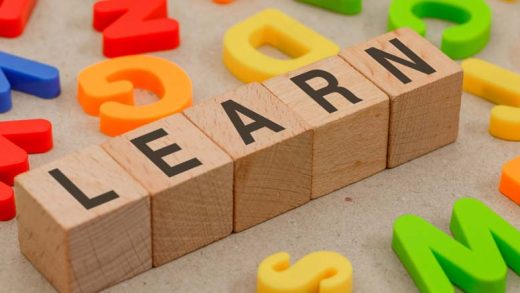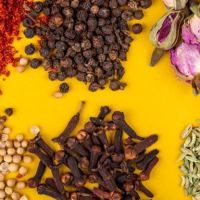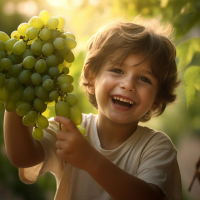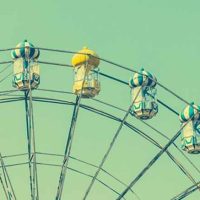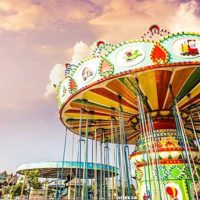Exploring the wonders of the living world forms the foundation for a child’s interest. This enchanting realm of childhood lays the groundwork for lifelong learning and discovery. This blog explores the essentials and features of the living world, focusing on kids. From the brilliant tapestry of flora and animals to the delicate dance of ecosystems. It will create a feeling of wonder in kids. It will guide them on their journeys of exploration and discovery. Let us see what the living world is and the characteristics of living organisms.
What is the Living World?
The living world is an exciting place full of diverse, fantastic creatures. This includes humans, animals, and plants! Living things are unique because they can move, breathe, and develop. Like flowers and trees, plants need water and sunlight to grow large and healthy. Animals squirm, hop, or fly about for food and entertainment, much like pets and wild wildlife do. Remember us, the people! We play games daily, eat delicious food, and learn new skills.
Living things carry life, like a secret ability that keeps them alive, making them unique. Thus, you always see the wonder of the living world around you. This can be a butterfly flying past, a sunflower reaching for the sky, or your buddy laughing! It’s a vast, breathtaking journey filled with wonder and discovery.
Essentials of the Living Worlds
In simple terms, the essentials of living are its components. Below is a summary of every element required to maintain the world of living.
- Water:
- Oxygen:
- Sodium Chloride:
- Proteins:
- Lipids:
Between 70 and 90 percent of the human body is water. It is essential to the maintenance of many biological processes.
Twenty percent of the atmosphere on Earth is oxygen. Energy necessary for various metabolic processes must be produced during aerobic respiration.
Sodium chloride, in its ionic state, is an essential component of the human body’s metabolic process.
Peptide bonds hold the lengthy chains of amino acids together in proteins. It is essential to the formation of the organism’s structure. The energy released allows it to be disassembled.
Lipids are polymers of fatty acids and alcohols for various purposes.
Characteristics of Living Things
The living world is often known as the biosphere. It includes all living things on Earth and the surroundings in which they live. Several characteristics separate living beings from non-living stuff. Here are the characteristics of living things:
- Movement:
- Respiration:
- Sensitivity:
- Growth:
- Reproduction:
- Excretion:
- Nutrition:
Living creatures move in many ways. Animals like birds and fish move quickly, but plants may move towards sunshine. Even the smallest cells in our body are constantly moving, which helps us remain healthy. Movement is like a dance of life, helping species explore, find food, and stay secure. So, whether it’s a cheetah running across the savannah or a sunflower facing the sun, movement is an exciting component of being alive!
Respiration is essential for both humans and animals, including insects. It’s similar to a specific manner of breathing oxygen and expelling carbon dioxide. Imagine taking a deep breath to fill your lungs before blowing out a birthday candle. It is similar to what living organisms do to remain alive. This gives us the energy to play, learn, and explore our beautiful surroundings. So, the next time you take a deep breath, remember that you are doing what all living creatures do to be healthy.
Living organisms have incredible senses, similar to superheroes. Living organisms like us can sense and react to their surroundings. Plants, for example, can detect light and move their leaves towards the sun to get energy. Animals utilise their senses to obtain food, avoid danger, and even form friendships. So, whether it’s your puppy wagging its tail in happiness or a flower blooming in the morning, sensitivity allows living things to see and respond to their surroundings in exciting ways!
Growth is nature’s way of saying, “You’re getting bigger and stronger!” Living organisms, like us, expand in height. Trees begin as tiny seeds and develop into towering giants. Animals grow from adorable newborns to fully developed adults. It’s like a beautiful journey from tiny to huge and powerful. So, when you see a sprouting plant or a tiny animal take its first steps, you are experiencing the fantastic miracle of development, a unique aspect of life that keeps everything in the living world developing and growing!
Reproduction is a natural process that ensures life continues. Animals have kids, plants produce seeds, and some microscopic animals, such as bacteria, divide in two to reproduce. It’s like passing on the secret code for staying alive! Baby animals and plants, like humans, acquire qualities from their mothers and fathers. It’s like a massive family reunion, with each new generation carrying the flame of life. So, whether it’s a newborn panda or a sprouting seed, reproduction is an incredible process that keeps life going!
Excretion is a natural method for all living things to say “goodbye, waste!”. Animals use numerous methods, such as sweating or going to the toilet, while plants may shed old leaves to create a place for new ones. It’s like cleaning and creating room for nice things! This process, known as excretion, is essential for keeping the living world clean and tidy.
Nutrition is essential for supporting life. Animals and plants need a different kind of sustenance than humans. Animals may consume plants or other animals, but plants produce their food via a process known as photosynthesis. This process involves sunlight, water, and air. It’s like eating a superhero lunch to boost up and tackle the day! So, whether it’s a busy bee drinking nectar or you enjoying a nutritious snack. Nutrition is the delightful secret that energises and prepares the living world for any adventure!
Understanding the essentials and characteristics of living organisms is essential for young children’s development. Children who are curious about nature may develop a feeling of wonder, compassion, and environmental responsibility. Observing plants, animals, and ecosystems fosters scientific curiosity and creativity. Consider enrolling your kid at Kangaroo Kids International Preschool to encourage these skills. Here, an extensive curriculum promotes a love of learning through engaging activities. By developing a love of the living world in children from an early age, we may prepare them to be sensitive caretakers of the environment. Together, let us create a feeling of wonder and responsibility in our children.


